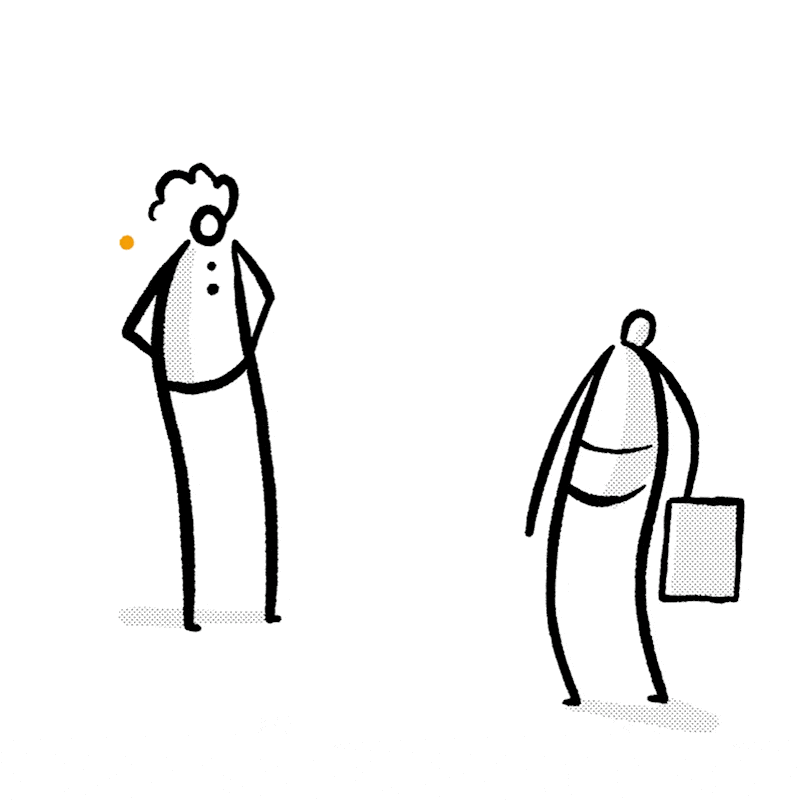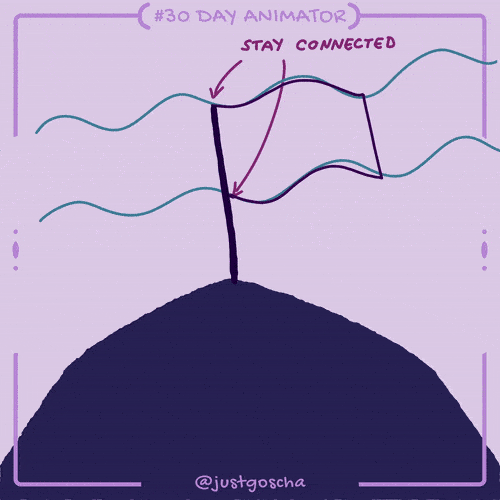Faster workflow for bespoke animated maps
I have been really enjoying developing storytelling with the use of animated maps over the last couple of years. One of my favourite pieces was the one created for the Prague walkabout:
The problem was that this was a huge effort that doesn’t feel particularly sustainable (these pieces are usually created in my spare time) so I need to find a method that works a bit better. I found myself stumbling across the SnazzyMaps site which enables you to customise google map data.
Here is my process:
1: Data capture
Using the WeWorkOutDoors app on my watch (I’m certain there are other ways of capturing .GPX file data but this is what I find most useful for now) I record the route. I love this data input method - it’s so direct and unselfconscious. Perhaps one day I shall use it for more than an outline route but for now this is golden.
Here’s one I recorded for a St. Malo run in the summer:
2: GPX export into Footpath
Footpath is an app I happily subscribe to. I use it a lot to create journey plans and to get a sense of what is possible if I am visiting a new place. For me the killer feature¹ is that you can import and export GPX data. Usually the route I might take is planned here before being exported out to the WeWorkOutdoors app, but in this case I am going the opposite way.
Here is the path I took along the Birmingham Canal in the Summer:
3: Planning the useful sections for animation
From here I can do a bit more detail planning. I might do a crude screen capture of the Footpath route and drop that into my video edit - or I might take a bit of time using it as a basis for designing and drawing a more bespoke map. It is here that SnazzyMaps becomes really useful.
Last Easter I found myself visiting North Wales for 24 hours and had some time to do a run around the Llandudno peninsula - it was a fun little adventure where I saw some gorgeous stuff (and seals!):
The main issue for me at the time was that I didn’t want to spend ages recreating a map in the way that I had with Prague so I used SnazzyMaps to create some blank areas that I then tweaked in a fraction of the time.
Here is a section of the Wales coastline that I exported from SnazzyMaps. I was delighted that you could remove all the usual map labels.
Then I manipulated the texture before adding in the key details.
This took a fraction of the time.
POST SCRIPT
If only design were as concise as this blog post makes out. In reality the SnazzyMaps approach had limited value this time round. Although it works really well in providing accurate faceless imagery for tweaking - you still have to do the tweaking! For my latest series of overdue RunNotes videos (Birmingham, St Nic, Angers and St Malo) I spent a while playing with the original method before ditching it for the following:
create a panorama of routeless screenshots from Footpath
hand drawn a vector route using my original footpath data as a reference guide
use a combination of layers in Motion - the pixel panorama, svg-exported vector route
In the end editing is largely a smoke-and-mirrors kind of situation - loads of what happens is effectively an illusion that falls apart when you look closely. It’s important to return to the idea of what the audience needs to see and finding the most economical way of hitting that perception.
¹ there is another killer feature which makes this an essential app for me - I create a route and it maintains that route without the ‘intelligent’ rerouting that you get with Apple Maps. This means that it functions a bit like an old-school paper map. I can wander wherever without constantly being guided or cajoled. I love this sense of planning/freedom. The added fact that you can use GPS with your phone in airplane mode is good. Better battery and just simply being able to wander as you will.
Adventures in animation
I am making some exciting steps into the world of animation and I’m not sure I want to look back.
And when I say animation I mean indie-animation: where I have been involved in my own idiosyncratic way with local tools. There is something quite wonderful about being able to make something move and live on the screen. Yes it takes ages and yes I sometimes hate it, but there is an undeniable magic when you see life reflected in those moving lines.
For me the steps have been threefold:
1: being aware of the classic principles
2: getting into how animators think
3: figuring out software and hardware hacks that work
I have tried to outline a few of my steps below - sorry it’s brief but better that I capture some kind of a trail than not at all.
1: Awareness of the classic principles
There is actually quite a lot of material about this online - and a few decent books on how Disney developed the basics in the early days. I love how these principles crop up everywhere. This video is perhaps the most beautiful I have seen, although Alan Becker also did a great job of explaining them. The big takeaway for me is that there are well-established conventions that are a helpful starting point.
2: Getting into the thinking process of an animator
Some examples that I have found really really helpful:
Alex Grigg - some of the most helpful and beautifully designed learning videos on animation I have seen. These gave me a lot of confidence and helped me to eventually evaluate my software and hardware needs against the kind of things he models.
Ben Marriott - although he focusses a lot on the use of Adobe products, I have found his step by step process videos really helpful. I studied him make this house jump, and this illustration walk many times - often replaying and rewatching until I can get the gist of how he is planning and framing things.
Gabriel Gareso - he’s not just a really great animator but he created a bunch of painstaking workflow videos that give a realistic sense of what it takes to get something across the line. I have watched them a lot.
JustGoscha’s #30dayanimator course - this was well worth the money. I still haven’t covered everything but to have someone spend a bit of time documenting how they create the illusion of life is invaluable. It was a scaffolding experience that I am hugely grateful for. When you first see how to animate a flag waving it can be quite special.
3: Figuring out software and hardware hacks that work
The options that I considered were - Rough Animator, Toon Squid and Clip Studio Paint. In the end I went with CSP because it is such a brilliant drawing tool and has pretty good animation functionality built into it. I know it can feel a bit fiddly - but if you start with a strong idea of what you need there is hope in an endless tunnel!
On that point Reuben Lara has a terrific paid course leading on from his free YouTube videos that was exactly right for me in getting a better intentional grasp of CSP. His course is a really useful insight into using bespoke recorded actions and (hardware) keyboard shortcuts to speed up and benefit the whole activity.
So this is where I ended up for the listening film:
Hardware - an iPad Pro with the Apple Pencil 2 and a Logitech K811 Bluetooth Keyboard. For compositing I have gotten used to exporting assets out and bringing them into Motion on a mac.
Software - Clip Studio Paint specifically on an iPad Pro for the bulk of my work - for some reason it’s not as quick on an M1 MacBook Pro (I know, right!? No idea why but hey). I will use it on the Mac when I want to set up complicated timelines or edit and tweak particularly tricksy edits that need better screen space. Nothing beats the iPad set up though - it has all of my favourite tools and a superior drawing feel. I get a little anxious about how invested I am in this particular product - hopefully Elon won’t buy it.
For me the essential thing was having a reliable workflow pattern in place. Reuben Lara was very helpful in encouraging me to think about how to get those things sorted out in CSP. Animation is such a painful thing to think about you want to have your process ironed out before you step into more involved projects - the cognitive load is just too great once it all gets going - a handful of times I’ve tried to fix a problem and it got so depressingly complicated that all my animating mojo was gone - these are things that a reliable set up solves.
A streamlined and reliable approach that spotlights creative thinking has to be the priority.
Dedicated to Declan - you are uniquely talented and I hope this helps a lot.






